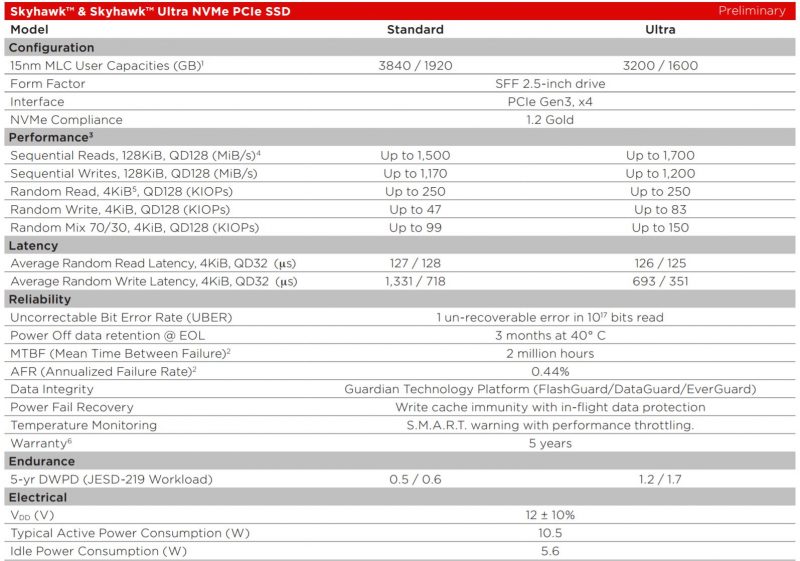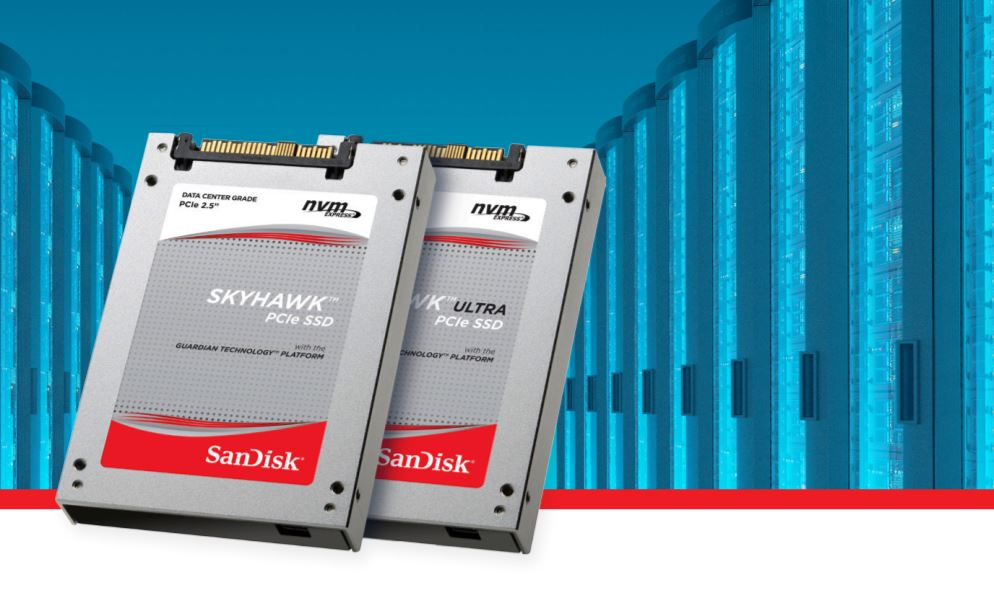We now have new U.2 NVMe SSDs on the market with the new WD SanDisk Skyhawk NVMe SSDs. Western Digital acquired SanDisk in 2016 as the company came to terms with the idea that solid state drives were going to be the only path forward in high-performance storage. The new Skyhawk NVMe drives are bifurcated into two lines, the Skyhawk and Skyhawk Ultra. If you are thinking that name sounds familiar, Skyhawk is also what avian variety Seagate uses for its surveillance hard drives. Seriously, of all the product names Western Digital names new SSDs after Seagate hard drives.
WD SanDisk Skyhawk NVMe SSDs
Both the SanDisk Skyhawk and Skyhawk Ultra NVMe drives are launching in the lower endurance segment of the market. STH’s own testing and experience show that this is sufficient for the majority of workloads. See our Used enterprise SSDs: Dissecting our production SSD population for more details. Here are the specs of the new NVMe drives from WD.

We will take a quick note here that these are considered lower performance NVMe SSDs. They have up to 1.5GB/s read and 1.17GB/s sequential write speeds for the vanilla drive and up to 1.7GB/s read and 1.2GB/s sequential write speeds for the Skyhawk Ultra. The Skyhawk Ultra also boasts 1.2-1.7 DWPD write endurance while the vanilla drive is 0.5 to 0.6 DWPD. The Skyhawk Ultra also features lower latency and higher 4K read/ write speeds than the vanilla version.
For 2017 enterprise storage, the U.2 form factor is still the “in” form factor. Unlike with most m.2 drives, the U.2 form factor drives like the WD SanDisk Skyhawk fit into similar form factors than industry standard 2.5″ drives and have room for power loss protection circuitry.
Final Words
Why is it that we have bird names as storage? Seagate has been using the Skyhawk name for several quarters, however, WD SanDisk chose to trademark the Skyhawk name. This is terrible for consumers as these are both storage devices but they use different interfaces, media and are from different companies. We will give the WD SanDisk team a nod for a sly move trademarking the Skyhawk name, but as consumers of drives it is completely unnecessary and will only cause confusion in the marketplace.




